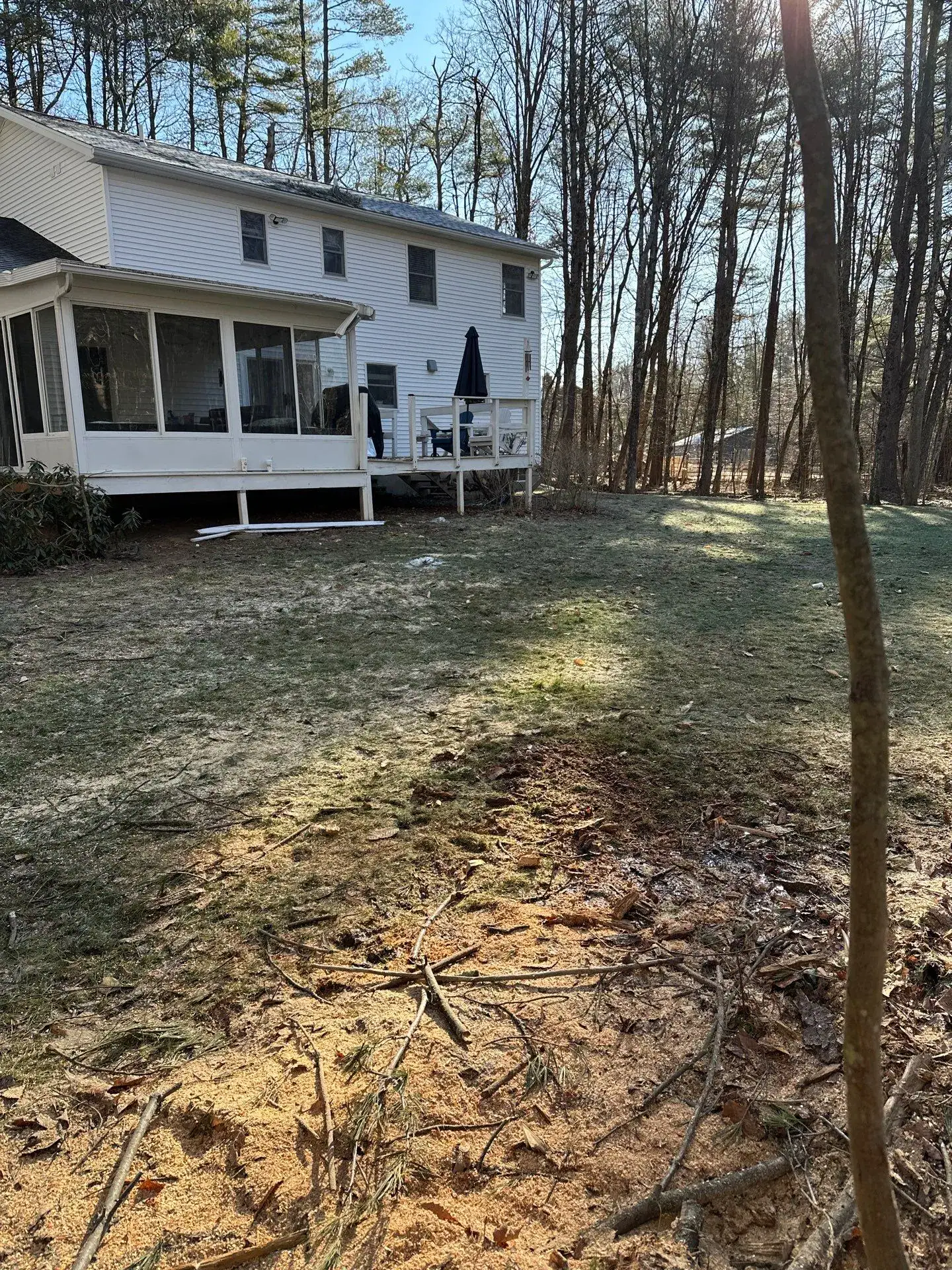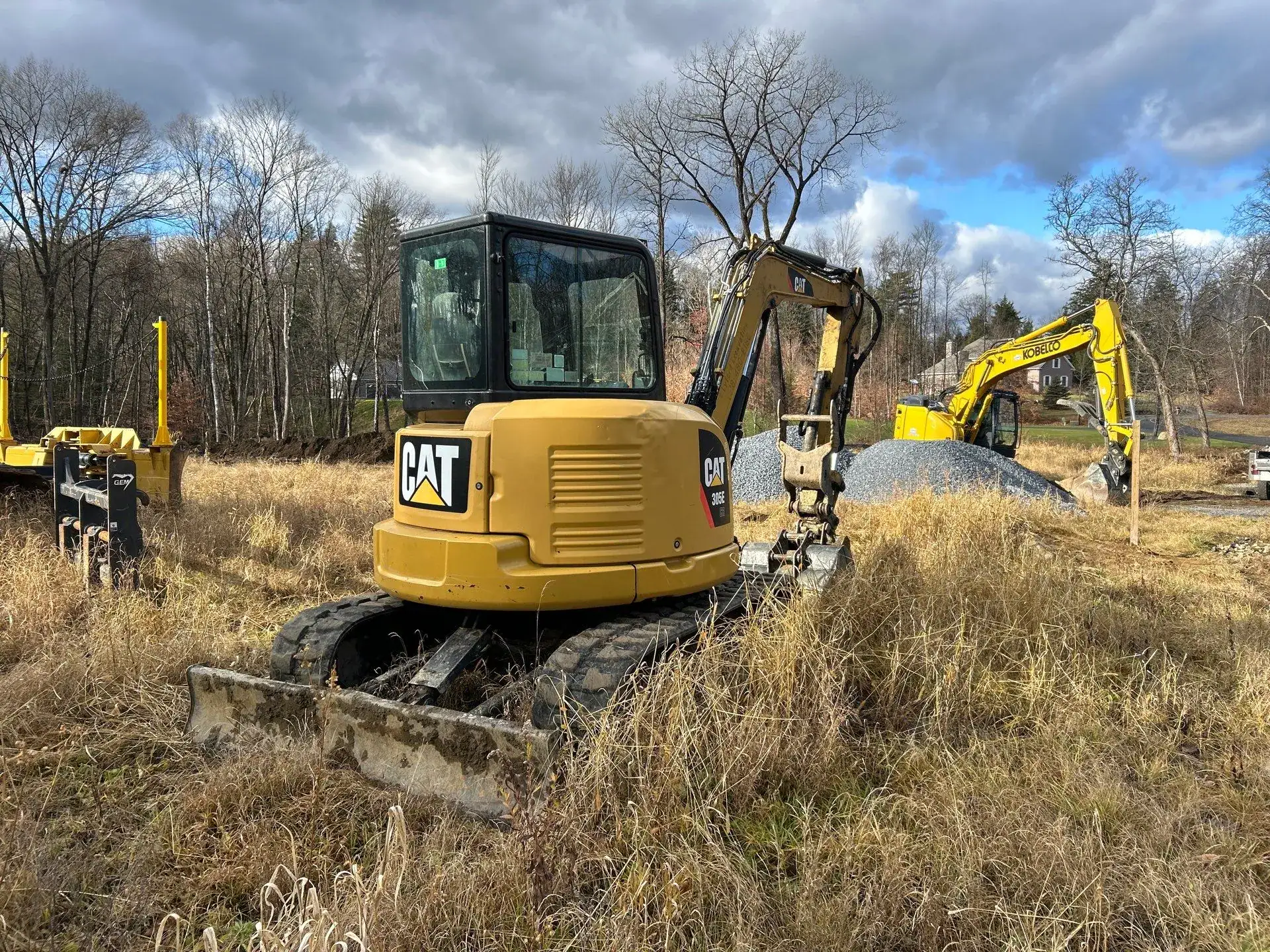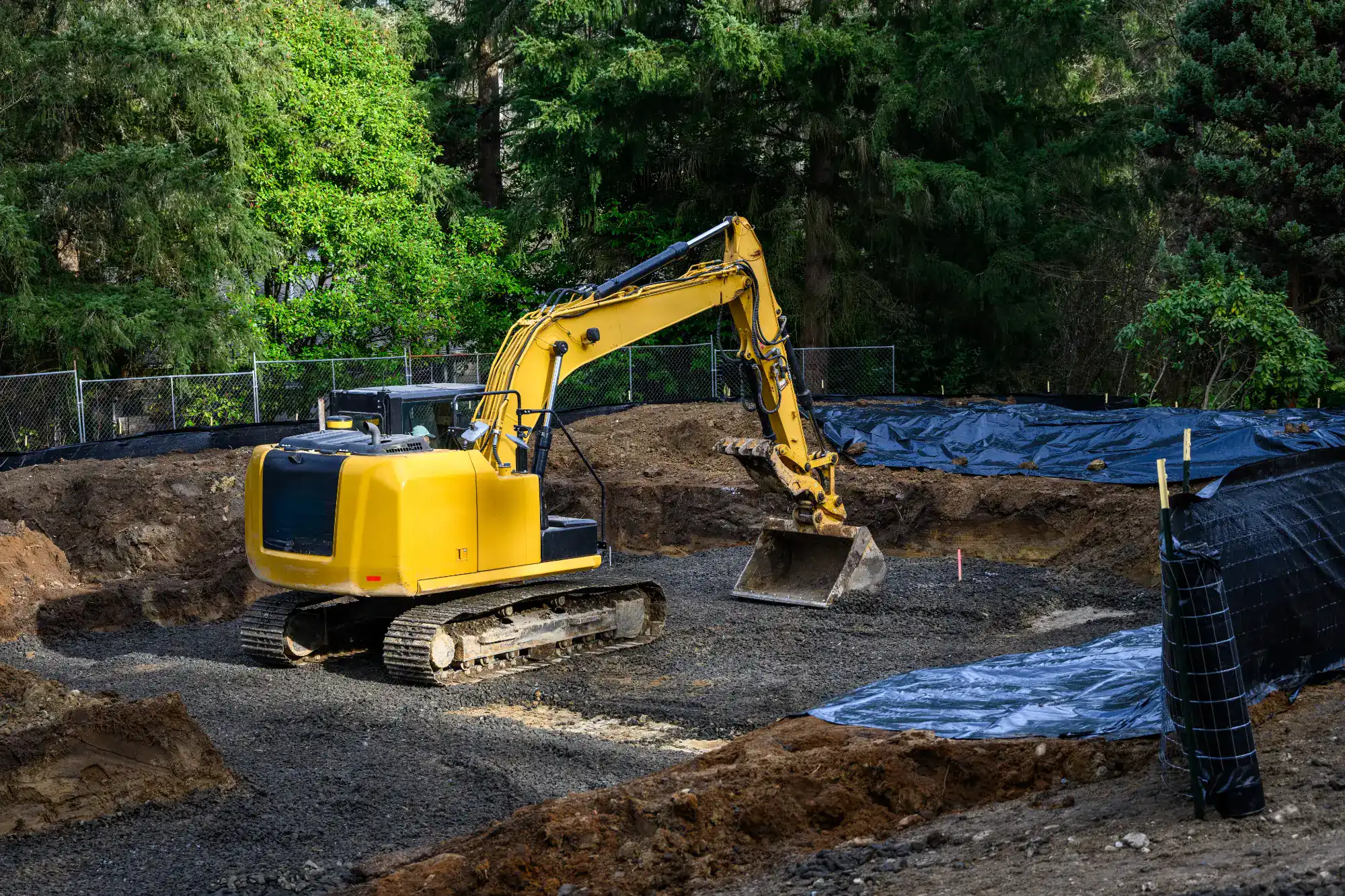Professional excavating contractors use proven safety protocols, OSHA compliance, and specialized equipment to protect workers and property during excavation projects.
Share:

Summary:
Every safe excavation project starts with thorough daily inspections before any work begins. Daily inspections of excavations, the adjacent areas, and protective systems shall be made by a competent person for evidence of a situation that could result in possible cave-ins, indications of failure of protective systems, hazardous atmospheres, or other hazardous conditions. An inspection shall be conducted by the competent person prior to the start of work and as needed throughout the shift.
These inspections aren’t just paperwork exercises. They’re critical safety measures that can literally save lives. Inspections shall also be made after every rainstorm or other hazard-increasing occurrence. Weather conditions, soil changes, and equipment positioning all affect site safety throughout the day.
We assign competent persons who understand soil conditions, recognize hazards, and have the authority to stop work when unsafe conditions develop. This isn’t negotiable—it’s a fundamental requirement for safe excavation work.

OSHA says no matter how deep the excavation is, a competent person must inspect conditions at the site on a daily basis and as frequently as necessary during the progress of work to make sure that the hazards associated with excavations are eliminated before workers are allowed to enter. A competent person has thorough knowledge of the OSHA standard 29 CFR 1926.650-652 /Subpart P.
But knowledge alone isn’t enough. The competent person has the ability to recognize unsafe conditions, the authority to stop the work when unsafe conditions exist, the knowledge of how to correct the unsafe conditions, and does it! If someone else has to be called in order to stop the work, or the designated competent person does not stop unsafe acts and conditions, the person is not acting “competently” within the meaning of the standard.
This means the competent person must be on-site, actively monitoring conditions, and empowered to make immediate safety decisions. They’re not just observers—they’re active safety managers who can shut down operations the moment they spot potential hazards. Part of this inspection process includes determining the soil classification. OSHA has included in Appendix A of its excavation standard methods to make it easier for a competent person to classify soils. The ability to determine soil type correctly is critical, because soil type is one of the determining factors in specifying protective systems.
We invest in proper training and certification for our competent persons because we understand that this role is the foundation of excavation safety. Without a qualified competent person, even the best equipment and procedures can’t guarantee worker safety.
Not all soil behaves the same way, and understanding soil conditions is critical for determining the right safety measures. Not all soil is created equal, and unstable or loose soil can be a real challenge during excavation. It may not provide the necessary support for a building or could collapse into trenches, posing safety risks.
We conduct thorough soil analysis before excavation begins. We begin with a thorough analysis of soil conditions to determine their stability. If the soil is loose or prone to shifting, we use soil compaction using equipment to compact the soil for better stability, stabilizing agents by adding materials like lime or cement to strengthen weak soil, and shoring systems by installing a trench box or other support systems to prevent cave-ins. These steps ensure the ground is secure enough to support the structure and safe for our team to work on.
Soil classification isn’t just about what you can see on the surface. Factors like moisture content, composition, and previous disturbance all affect how soil will behave during excavation. Unstable soil conditions can lead to soil slides and collapses, posing a danger to workers in excavations. Factors such as soil composition, moisture content, and slope angles can contribute to soil instability. A lack of groundwater control can also pose a problem as the water erodes soil.
This is why we don’t rely on guesswork. We use established testing methods and classification systems to determine exactly what type of protective measures each specific soil condition requires. The wrong assumption about soil stability can lead to catastrophic failures that put workers’ lives at risk.
Want live answers?
Connect with a Emerson Excavating and Trucking expert for fast, friendly support.
A protective system must be used if an excavation is 5 feet or greater in depth. The three most commonly used kinds of protective systems are: shoring, shielding, and sloping. But choosing the right protective system isn’t a matter of preference—it’s based on specific site conditions and safety requirements.
We understand that different situations require different approaches. Designing a protective system can be complex because you must consider many factors: soil classification, depth of cut, water content of soil, changes caused by weather or climate, surcharge loads (e.g., spoil, other materials to be used in the trench) and other operations in the vicinity.
The depth of excavation also determines additional requirements. Shallower trenches may or may not require a protective system – if a trench is less than 5 feet deep, a competent person should inspect the site to determine if a protective system is required. Deep trenches have extra requirements – sloping and benching are only acceptable solutions at depths less than 20 feet. Additionally, the protective system for trenches at least 20 feet deep needs to be designed or approved by a registered professional engineer.

Each protective system serves a specific purpose and works best under certain conditions. Sloping involves cutting back the trench wall at an angle inclining away from the excavation. This method works well when you have adequate space and stable soil conditions, but it requires more room than other methods.
Shoring requires installing steel or aluminum hydraulic/static shores or other types of supports to prevent soil movement and cave-ins. Shoring systems work well in confined spaces where sloping isn’t practical, but they require specialized equipment and expertise to install properly.
Shielding protects workers by using trench boxes (trench shields) or other types of supports to prevent soil cave-ins. Trench boxes provide immediate protection and can be moved as work progresses, making them ideal for utility installation and similar projects.
The key is matching the right system to your specific conditions. We don’t use a one-size-fits-all approach. We evaluate soil conditions, excavation depth, space constraints, and project requirements to determine which protective system will provide the safest working environment. A trench collapse in Jarrell, Texas, in 2022 resulted in two deaths. To protect against cave-ins, workers must utilize preventive measures such as a trench box—also known as a trench shield—a two-sided support system that provides stability and keeps utility workers safe while digging.
This isn’t about cutting corners or saving money—it’s about using engineering principles to create the safest possible working conditions for every specific situation.
Underground excavations can contain deadly gases that you can’t see or smell. Where oxygen deficiency (atmospheres containing less than 19.5 percent oxygen) or a hazardous atmosphere exists or could reasonably be expected to exist, such as in excavations in landfill areas or excavations in areas where hazardous substances are stored nearby, the atmospheres in the excavation shall be tested before employees enter excavations greater than 4 feet (1.22 m) in depth.
We take atmospheric testing seriously because the consequences of ignoring this requirement can be fatal. Proper ventilation and gas monitoring are essential to ensure a safe working environment. To mitigate risks, OSHA requires atmospheric testing before workers enter an excavation area that’s more than 4 feet deep where an oxygen deficiency or hazardous atmosphere is suspected. If the results show a hazardous environment, employers must provide workers with respiratory protection or work to ventilate the work site. It’s also essential to keep lifesaving equipment such as safety harnesses and breathing equipment at hand in case of an emergency.
This isn’t just about following regulations—it’s about understanding that excavation work can expose workers to invisible dangers. Methane from decomposing organic matter, hydrogen sulfide from sewer lines, and carbon monoxide from equipment exhaust can all accumulate in excavations. We use calibrated gas detection equipment and establish ventilation procedures before workers enter any potentially hazardous atmosphere.
The testing isn’t a one-time event either. Adequate precautions shall be taken to prevent employee exposure to atmospheres containing less than 19.5 percent oxygen and other hazardous atmospheres. These precautions include providing proper respiratory protection or ventilation in accordance with subparts D and E of this part respectively. Atmospheric conditions can change as work progresses, especially in areas with underground utilities or contaminated soil.
National reporting shows worker deaths in trench collapses declined nearly 70 percent since calendar year 2022. Fatalities decreased from 39 in 2022 to 15 in 2023 and 12 in calendar year 2024. These decreases follow intensive outreach and education by OSHA and industry partners. This improvement demonstrates that proper safety protocols work when they’re consistently applied.
We don’t view safety as an optional expense—we understand it’s an essential investment in protecting workers and ensuring project success. The combination of daily inspections, proper protective systems, atmospheric testing, and competent person oversight creates multiple layers of protection that prevent accidents before they happen.
When you’re planning your next excavation project in Saratoga County, NY, choose a contractor who demonstrates their commitment to safety through actions, not just words. Look for contractors who can explain their safety procedures, show you their equipment, and provide documentation of their safety training and OSHA compliance. Your project’s success depends on it, and more importantly, workers’ lives depend on it. Contact Emerson Excavating and Trucking to discuss how our comprehensive safety approach can protect your project from start to finish.
Article details:
Share:
Ready to Start Your Project Right?
Get a straightforward quote for your excavation, aggregate, or dumpster rental needs. No pressure, just honest answers and reliable service from local professionals who understand your area.
Emerson Excavating and Trucking
Company
Support
Useful Links